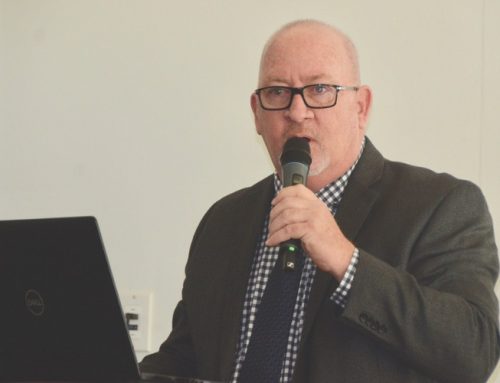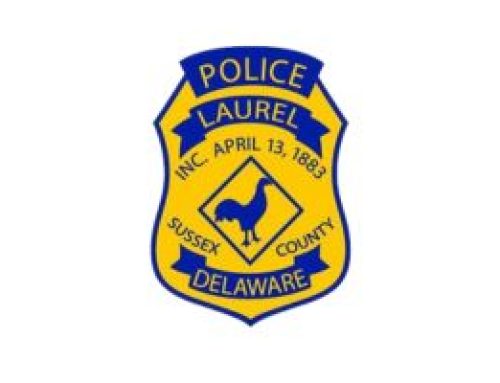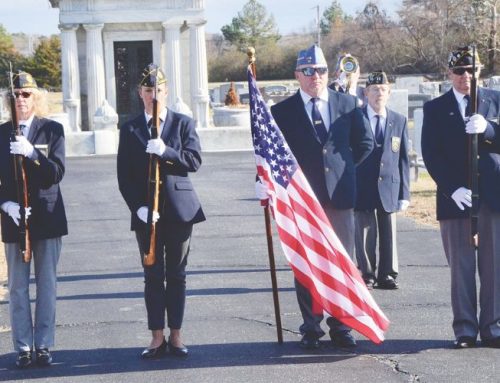A representative of an area conservation group spoke to members of the Laurel Mayor and Council about efforts underway to help protect and preserve Broad Creek and other tributaries and wetlands that join the Nanticoke River on route to the Chesapeake Bay.
Lisa Wool, executive director of the Nanticoke Watershed Alliance (NWA), said the organization is active in helping to promote efforts to conserve the natural, cultural and recreational resources of the Nanticoke River.
Wool said she likes to speak to the council on behalf of the NWA at least once a year to share with the community what the organization is doing to promote water quality and give a report on the health of the Broad Creek and Nanticoke River. She said one of the priorities of the NWA is to conduct on-going water quality testing in areas along both waterways.

Executive Director Lisa Wool of the Nanticoke Watershed Alliance, recently presented information about the organization’s projects to address the protection, preservation and education of the Nanticoke River Watershed, including Broad Creek. Photo by Tony Windsor
“We have over 100 volunteers who go out every other Sunday or Monday and do a wide variety of testing,” she said. “The water samples are then sent off to the lab to provide the information needed to recognize where water quality may be an issue. The data we receive is used according to the protocol of the U.S. Environmental Protection Agency.”
Wool said the volunteers, known as “Creekwatchers” collect data that measures five areas of concerns including levels of dissolved oxygen, water clarity, total nitrogen, phosphorus and chlorophyll. Each are graded from A+ and lower based on the quality and combined for an overall grade. She said that due to the heavy amounts of rain that have been experienced over the past year or so, most areas are experiencing a drop in water quality.
The NWA is a non-profit based in Vienna, Md. The environmental organization was started in 1992 when Maryland and Delaware conservation organizations agreed to develop an organization that would focus on protecting the waterways and wetlands of the Nanticoke River. The Nanticoke River represents 725,000 acres of watershed and is reportedly the most biologically diverse watershed on Delmarva. It is also home to the highest concentration of bald cypress on the Atlantic Coast.
The NWA also seeks to work in collaboration with community entities, including community members, conservation partners, businesses, government, agriculture, churches and other industries individuals and groups to develop projects that can help improve the health of the Nanticoke River Watershed. This also includes building relationships with elected officials and area mayors, town managers and county administrators.
The NWA hopes to create opportunities to promote the Nanticoke and its tributaries as options for recreation and ecotourism. This includes engaging the public in events and opportunities that highlight recreational use and enjoyment of the river as well as encouraging recreational uses that respect private property rights and are compatible with natural resource conservation and preservation goals and raising awareness of the natural and cultural history of the area.
Last year when Wool visited the Laurel Council to share the water quality report with the town, Mayor John Shwed said it might be difficult for the Creekwatchers to ascertain what the Broad Creek water quality issues may stem from. “Every day there are thousands of gallons of water coming from seven nearby ponds including Trap Pond, Chipmans Pond, Records Pond and Raccoon Pond. It just seems to me that if you take samples from the creek, you would need to take into consideration the impact of those seven ponds to the east,” he said.
During the most recent Council meeting, Wool told Shwed that the NWA have considered this and have begun “optical brightener” monitoring. She explained that this is a technology that helps to determine whether water pollution may be tied to farmland runoff, or residential sewer-related problems.
According to “Water World” magazine, optical brightener monitoring (OBM) is a relatively new technique used to screen for a surrogate of human bacterial contamination in storm drainage outfalls and receiving waters. Optical brighteners are dyes that are added to many laundry detergents. These brighteners absorb onto natural fibers and cause them to appear whiter. Since laundry effluent is predominantly associated with sanitary wastewater, and since optical brighteners (OBs) decompose relatively slowly, they serve as ideal indicators of illicit discharges in storm drains.
“This is one way we can narrow down the pollution to determine if it may be a homeowner residential issue or a case of farmland runoff. We have already seen where there are areas that the Chesapeake Bay Program is willing to spend money to support residential sewer upgrades for homes that are located near waterways. Compared to other fixes, upgrades to storm water systems is a bigger bang for the buck in terms of the amount of pollution you are able to reduce,” she said.
Wool said the NWA is looking to the Delaware Department of Natural Resources and Environmental Control (DNREC) to help them in using the optical brighteners throughout Delaware to test the waters of the Nanticoke River and its associated creeks and streams.
During the Laurel Mayor and Council meeting, Wool spotlighted some of the community-based projects being offered by the NWA to support the protection and preservation of the Nanticoke River and Broad Creek. These include:
- Engaging residential property owners in watershed-best management practices
- Developing outreach programs to work with non-residential property owners and the business community on watershed-best management practices
- Continuing outreach to the agricultural communities on watershed-best management practices
- Developing an outreach program to work with faith-based organizations in the watershed
- Expanding K- 12 watershed-focused environmental education opportunities and identifying opportunities to collaborate with regional institutions of higher education
Wool said the NWA reaches out to area “Partners in Conservation,” which make up about 30 businesses and organizations including DNREC, Delmarva Poultry Industry, Chesapeake Bay Foundation, Friends of the Nanticoke River and the Laurel Redevelopment Corporation, who have all given feedback to help in generating a “Strategic Plan” to help protect the Nanticoke River and its tributaries.
She said that as part of the NWA’s partnership with area faith-based organizations, the organization plans to work in collaboration with the Laurel Centenary Church and DNREC when the church undergoes upgrades to its parking lot. “We are going to suggest ways to use special ‘green alternative’ designs like trees and other things to capture rain water and let it soak into the ground rather than allow it to run off into the Broad Creek,” she said.
Another project the NWA is involved in is a special recreational promotion of the Nanticoke River and Broad Creek. This is part of the organization’s “Paddle the Nanticoke” initiative, which encourages people to get up close to the water by taking kayak and canoe trips.
She is hoping the town of Laurel will be interested in setting up special self-serve canoe rental stations at its Canoe/Kayak Launch, which was installed a few years ago as part of a Nanticoke Rotary Club project.





